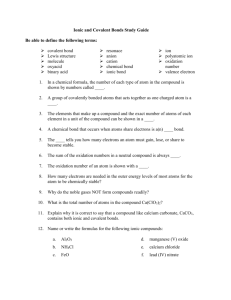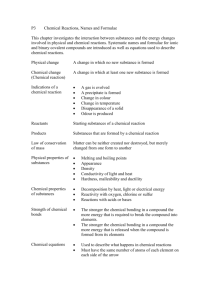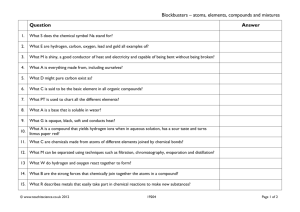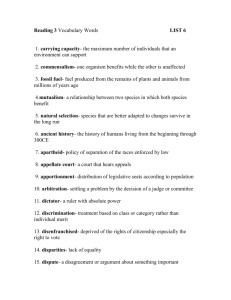Exact Numbers- values are known exactly Inexact Numbers
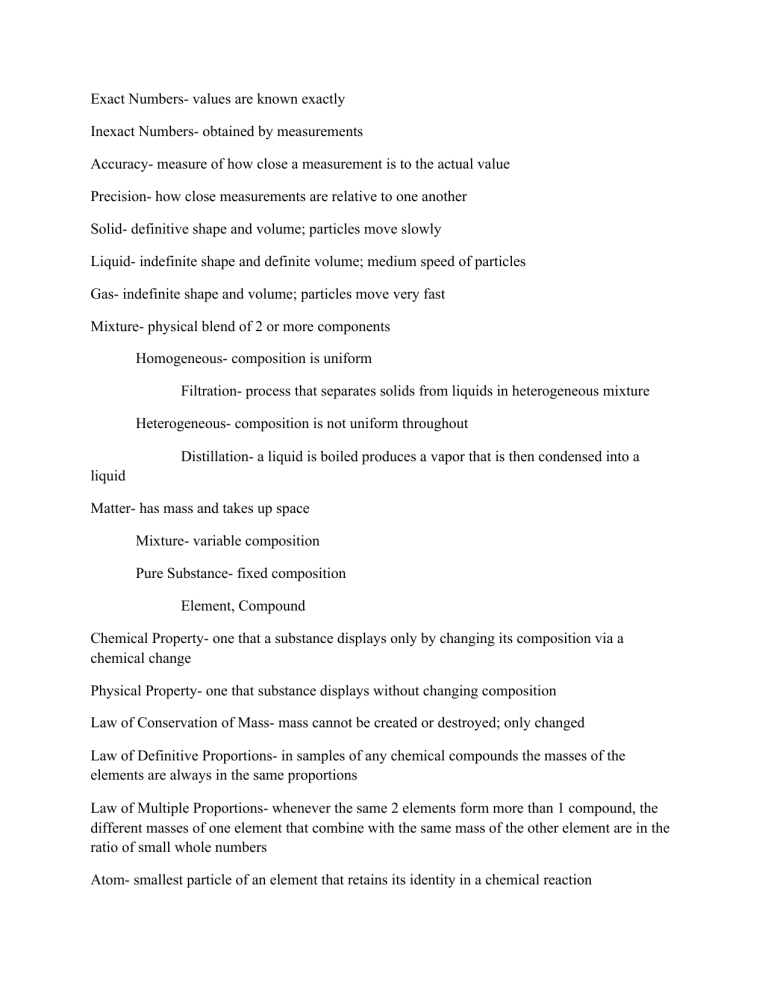
Exact Numbers- values are known exactly
Inexact Numbers- obtained by measurements
Accuracy- measure of how close a measurement is to the actual value
Precision- how close measurements are relative to one another
Solid- definitive shape and volume; particles move slowly
Liquid- indefinite shape and definite volume; medium speed of particles
Gas- indefinite shape and volume; particles move very fast
Mixture- physical blend of 2 or more components
Homogeneous- composition is uniform
Filtration- process that separates solids from liquids in heterogeneous mixture
Heterogeneous- composition is not uniform throughout liquid
Distillation- a liquid is boiled produces a vapor that is then condensed into a
Matter- has mass and takes up space
Mixture- variable composition
Pure Substance- fixed composition
Element, Compound
Chemical Property- one that a substance displays only by changing its composition via a chemical change
Physical Property- one that substance displays without changing composition
Law of Conservation of Mass- mass cannot be created or destroyed; only changed
Law of Definitive Proportions- in samples of any chemical compounds the masses of the elements are always in the same proportions
Law of Multiple Proportions- whenever the same 2 elements form more than 1 compound, the different masses of one element that combine with the same mass of the other element are in the ratio of small whole numbers
Atom- smallest particle of an element that retains its identity in a chemical reaction
John Dalton
Dalton’s Atomic Theory- 1. All elements are composed of tiny particles called atoms
2. Atoms of the same element are identical
3. Atoms of different elements can physically/chemically combine in simple whole number ratios to form compounds joined, or rearranged
Cathode- negatively charged
Anode- positively charged
4. Chemical reactions can occur when atoms are separated,
Millikan Oil Drop Experiment- able to find mass of electron
Electron- 1-; 0 amu
Proton- 1+; 1amu
Neutron- no charge; 1 amu
Thompson’s Pudding Model- electrons are spread out in atom and outside is positively charged
Rutherford’s Gold Foil Experiment- atom is mostly empty space
Atomic Number- number of protons in atoms
Atomic Mass- protons and neutrons in an atom
Isotope- atoms protons do not change, but neutrons do
Periodic Table
Period- row
Group/Family- vertical column
Metals- good conductors of heat and electricity; malleable; ductile; solids at room temperature
(except mercury)
Nonmetal- greater variation in physical properties; most are gasses at room temperature (except: sulfur & Phosphorus (solids), Bromine (liquid)); poor conductors of heat and electricity (except
Carbon)
Metalloids- properties similar to metals and nonmetals; B, Si, Ge, As, Sb, Te, At
Group 1A- Alkali Metals (except Hydrogen); 1+
Group 2A- Alkaline Earth Metals 2+ (except Beryllium)
Group 3A- Aluminum; 3+
Group 5- 3-
Group 6- 2-
Group 7A- Halogens; 1-
Group 8A- Nobel Gasses
Transition Elements- 3B-12B
Ions- group of atoms that lose or gain electrons
Cations- positive ions
Anions- negative ions
Mole- Avogadro’s Number; N
A
; 6.02*10 23
Amu- g/mol
Mol=mass/molar mass
#mols= #molecules/atoms/ N
A
Chemical Formula- representation of composition of substances; shows the kinds and numbers of atoms
Empirical Formula- gives the lowest whole number ratios of the atoms of the elements in a compound
Molecular Compound- gives the actual number of atoms of elements in a compound
Structural Formula- represents covalent bonds by dashes and shows arrangement of covalently bonded atoms
Molecular Elements/Common Diatomic Molecules- F
2
, Cl
2
, O
2
, N
2
, Br
2
, I
2
, H
2
Molecular Compound- made of two or more nonmetals that are covalently bonded
Polyatomic Ion- group of atoms that have a positive or negative charge
Hydrate- contains specific number of H
2
O molecules
Naming Ionic Compounds
1.
Cation + Anion
2.
Adjust subscripts to balance overall charge
3.
Naming Ionic Compounds: Name of Metal + Stem + ide
4.
(transition elements: add charge with roman numerals in parentheses)
Naming Molecular Compounds
(Prefix + Name of first Element) + (Prefix + Stem + ide)
Naming Acids
1.
If starts with Hydrogen: add “hydro” to the beginning and “ic” to the end
2.
If anion contains Oxygen: - ate ic
ite ous
Percent Composition
(Mass of Element/Mass of Compound) = (%/100)
Limiting Reactant- reactant that limits amount of product in reaction
Theoretical Yield- amount of product that can be made in a chemical reaction, based on the amount of limiting reactant
Actual Yield- amount of product that is actually produced in a reaction
Percent Yield
(actual yield/theoretical yield) * 100
Solution- homogeneous mixture with solvent and solute
Solute- substance that gets dissolved
Solvent- substance that does the dissolving
Concentration- measure of the amount of solute present in a given quantity of a solution
Molarity = mol/L
Molarity Ratio = M
1
V
1
= M
2
V
2
Electrolyte- compound that conducts an electric current when it is in an aqueous solution; all ionic compounds
Nonelectrolyte- compound that does not conduct electricity in an aqueous solution
Strong Electrolyte- completely dissociates its solution
Weak Electrolyte- conducts electricity poorly
Precipitate- when ionic compounds come out of a solution, when their solubility is exceeded; solid
Precipitation Reaction- reverse of dissolving
Double Replacement- AX + BZ = AZ + BX
•
If both products soluble (aq) no precipitate
• If (s) and (aq) precipitate
Molecular Equation- shows the complete neutral formulas for every compound in reaction
Complete ionic Reaction- shows reactants and products as they are actually present in solutions
Spectator Ions- present; but do not participate in reaction to produce precipitate
Net Ion Equation- emit spectator ions; only shows ion that reacts to produce precipitate
Atmospheric Pressure = 760 mm Hg, 1atm, 101.3 KPa, 760 Torr, 14.7 psi
Amount of Gas- if we would double the amount of particles then the pressure would triple
Volume- if we reduce volume pressure increases
Temperature- if we decrease temperature pressure increases
Boyle’s Law- P
1
V
1
= P
2
V
2
Charles’ Law- (V
1
/T
1
) = (V
2
/T
2
)
Gay Lussacs’ Law- (P
1
/T
1
) = (P
2
/T
2
)
Combined Gas Law- (P
1
V
1
/T
1
) = (P
2
V
2
/T
2
)
Avogadro’s Law- (V
1
/N
1
) = (V
2
/N
2
)
Ideal Gas Law- (P
1
V
1
/N
1
T
1
) = (P
2
V
2
/N
2
T
2
)
PV = NRT
R = Ideal Gas Constant = 8.31 L*KPa/K*Mol; .0821 L*atm/ K*Mol
Ideal Gas- particles have no volume; no attraction between particles; at high temperature and low pressure real gasses act like ideal gasses





